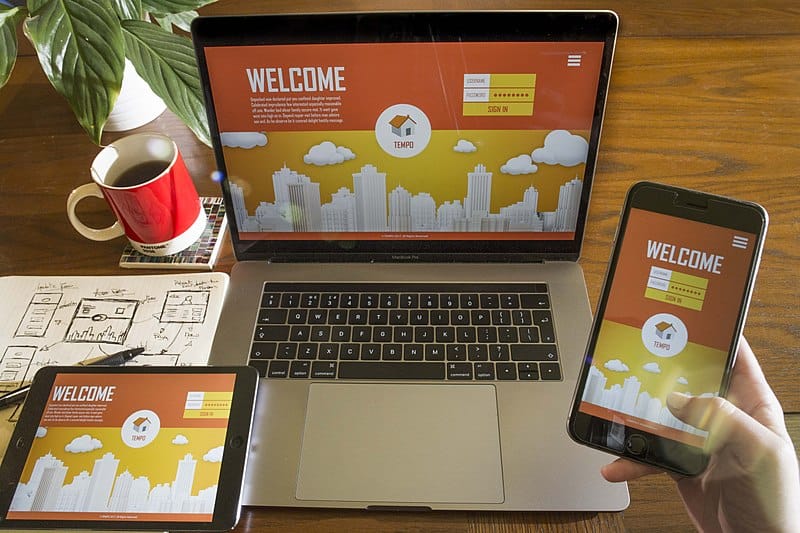When we talk about UX (User Design) we always think about usability. However, UX is broader these days and covers more than usability. Just like web design tools, UX design is evolving.
Whether you want to improve your workflow or just want to find out if you’re practices are within industry standards, here are some of the golden rules for UX.
Design for Users
It’s easy to fall in love with an idea. In fact we think it’s harmless; it’s infatuation. However, infatuation fades over time. This is why many freelancers and web designers continuously redesign their portfolio. They are infatuated with visual aesthetics rather than the user’s needs.
Luckily figuring out whether your ideas have user value is easy. All you need is to ask these 2 core questions during user testing:
- Do you want this?
- Can you use this?
It’s not romantic but at least you don’t end up using precious resources like time designing the wrong thing. It’s easier (and faster) to simply ask users what they need. When the results come in you will feel relieved even if the feedback is negative.
Another aspect is User Testing and we all know that this is important. However, there are still some undervalued tips that you need to be aware of.
- Maintain a loyal list of users and ask them to test often.
- Award free access in exchange for honest feedback.
- Have fun automating workflow of apps.
- Sit down regularly with your team to organize and discuss feedback.

Provide Clarity
Users can become confused. When this happens they stall, trust the brand less or worse, hit the back button. This is because we live in an impatient world and alternatives are always just around the corner. This is why users cannot be taken for granted. UX needs to be clear. Here are examples of clarity.
- Colour is one of the ways users understand an interface. It’s human nature to understand rather than recall and colour is one of the subtleties that is easily recognizable. For example, if you want to convey error, use red.
- Contrast helps elements stand out. It helps users shift the user’s attention. It’s a nonverbal way of telling users to concentrate on what they should be looking at.
- Repetition is also a good way of enforcing clarity. Do you want them to click a certain button? If yes then display it contextually a few times.
- Proportion refers to visual hierarchy. Ensuring that important elements stand out just by making them visually bigger than other elements.
- Lastly, there is the wording itself. Imagery is sometimes subjective, but words are literal. Hitting the submit button is fine but sending a confirmation letter can go a long way especially in the event of a lost connection.
Give Users Control
Websites offer a lot of options but sadly humans have yet to develop mind reading. Take ecommerce sites for example, they have a ton of categories and items can be filtered by features such as colour. This means that aside from having filtered results on the search results page customers have to deal with more interactions but this is not a bad thing. However, users want their own customized experience.
User control is beneficial because it enriches overall customer experience. Giving control can also lead to the development of new features and boost engagement.
Predict and Adapt
According to Hick’s Law the amount of time it takes to make a decision is related to the number of options a user has to make. This means that if it’s too long, users won’t make a decision. This cognitive over load is called cognitive paralysis. It’s happens when you can’t act because there are too many choices. Here are some tips to reduce choice.
- Keep contextual and visual layouts minimal to
help customers decide faster. But it can be hard to push an element to the
backseat in favour of another. This is why you also need context. What’s
important on one screen might not be important in another. Here are some tools
to find out what to keep and forgo:
- A/B testing.
- Heat maps
- Google Analytics
- Artificial intelligence can help users access
relevant content without having to do a search. Here are some examples:
- Similar products
- Products you might like
- Customers also purchased
- Similar reading
Maintain Consistency
Consistency is one of the key elements not only of branding but of UX too. Our brains are designed to recognize shortcuts and there are many times that we don’t even recognize it anymore. When the traffic light turns green, we don’t analyse it anymore. We automatically press the gas pedal. Now imagine if the red, yellow and green buttons are suddenly replaced with stop, get ready and go. We would all be taken aback. Thankfully it’s just for a few seconds.
The problem is, those few seconds are precious in UX. Users automatically expect things to make sense and become quickly frustrated if it doesn’t. if you’re used to doing a certain action on a website, you expect to mimic the same action on another page. This is an ideal example of consistency.
Another good example is the submit button. If you’re filling out a form online and then submit using the blue button. Then another form needs to be filled and the blue submit button is used again. Therefore it makes sense that your subscribe button is also blue.

Treat Customers as Users and Vice Versa
Customers are the same as users.
A user is someone who uses an app or website but some users are also customers. What happens when a user becomes a customer? Many companies sell a product and then abandon their customers. This is called churn and burn and it’s bad for business because:
- Customers can experience anxiety after purchasing a product.
- A bad customer experience means they might never come back.
- Bad reviews can stop users from becoming customers.
The solution is to treat all users as customers. Improve their experience by providing free updates, requesting feedback or letting them know that they’re there if you need customer support. A huge factor in customer experience is how we treat customers when they’re not customers anymore.
Convey Value Proposition
Value is not understood subconsciously. It needs to be communicated consciously in order to be understood. Humans constantly look for gratification and if there isn’t a sign we lose interest right away. When it comes to value proposition, we think about the product right away. However if we can communicate to the user the positive experience even during the most boring interaction, the sense of fulfilment is higher.
Many users will never think that answering forms are fun. However, encouraging them along the way can be the motivation they need to keep going. If they feel that you want them to stay, then they will stick around.
UX should be treated like each step is an adventure; like every step is accomplishing a goal and receiving benefit once it’s completed.



